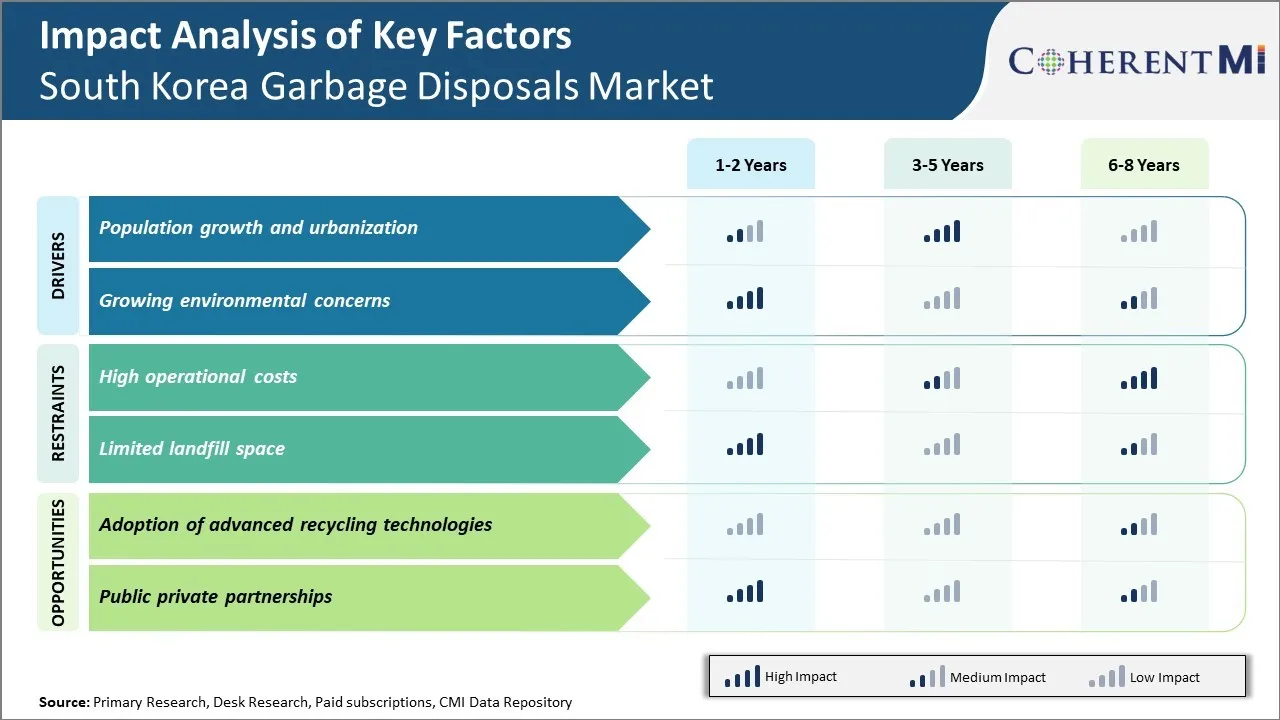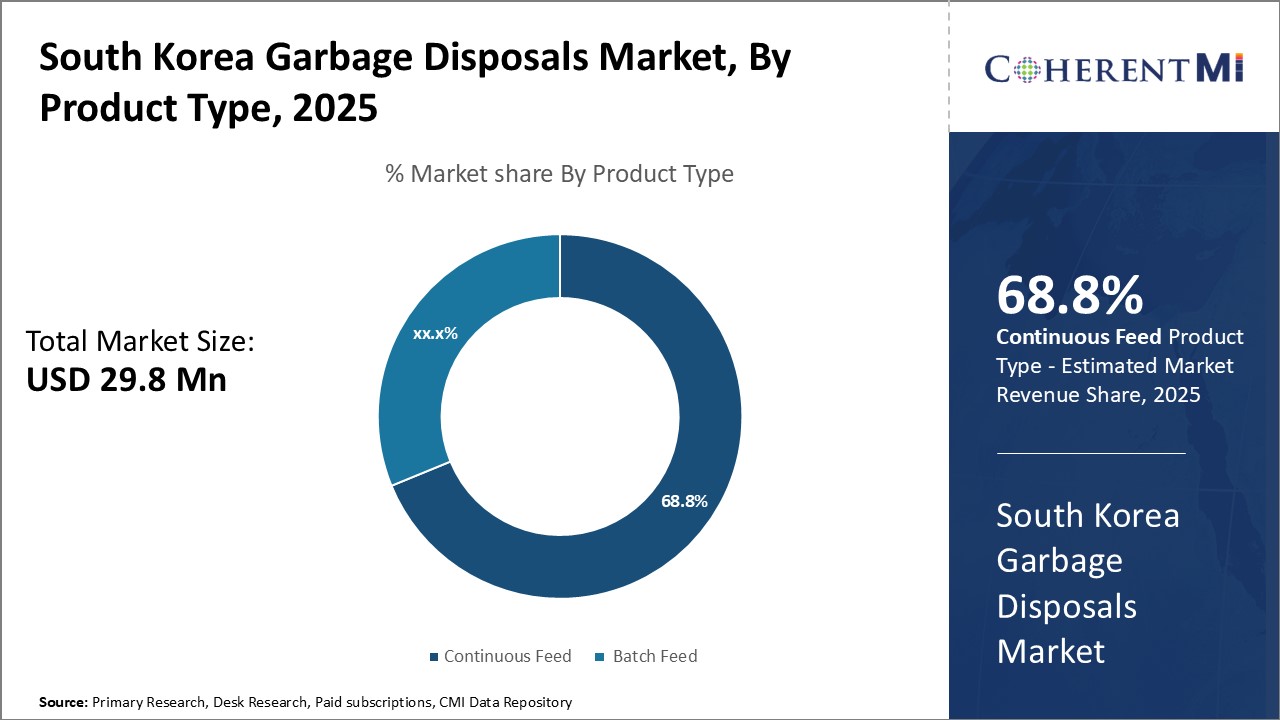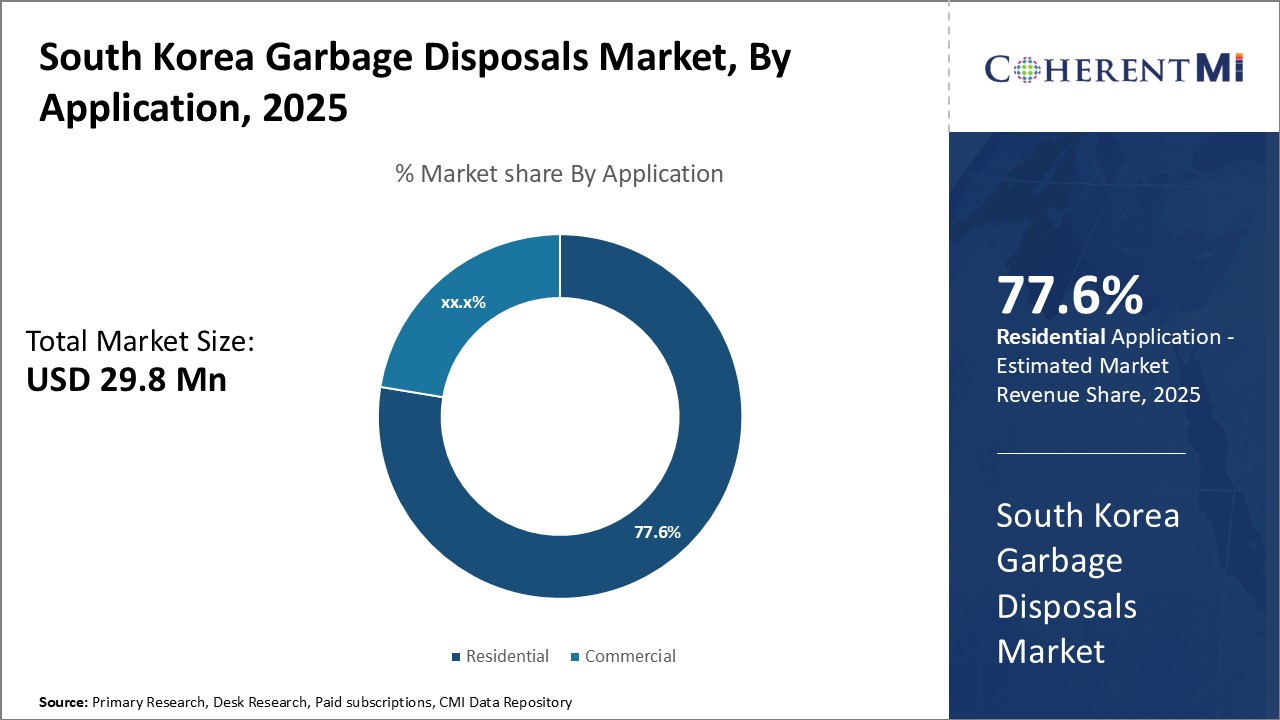South Korea Garbage Disposals Market Size - Analysis
The South Korea Garbage Disposals Market is estimated to be valued at USD 29.8 Mn in 2025 and is expected to reach USD 41.1 Mn by 2032, growing at a CAGR of 4.7% from 2025 to 2032.
Market Size in USD Mn
CAGR4.7%
| Study Period | 2025-2032 |
| Base Year of Estimation | 2024 |
| CAGR | 4.7% |
| Market Concentration | Medium |
| Major Players | Ecube Labs, Cambi ASA, Tana Oy, Amandus Kahl GmbH & Co. KG, Presona and Among Others |
please let us know !
South Korea Garbage Disposals Market Trends
The rapid population growth and urbanization seen in South Korea in recent decades has been a major driving factor behind the increasing demand for garbage disposals. As more people move into densely populated urban areas, the amount of household waste generated has grown exponentially.
With the urbanization trend in South Korea expected to continue according to Korea National Statistical Office projections, the market for garbage disposals is likely to expand steadily to handle waste volumes that will accompany rising urban concentrations in the country through 2030.
Market Driver – Growing Environmental Concerns
The government too has implemented several initiatives in the past few years to promote sustainable waste management practices and reduce landfill waste. For example, in 2020, the Ministry of Environment of South Korea announced its ‘Zero Waste 2030’ strategy which aims to recycle 100% of household waste by 2030 by introducing separate collections for food waste and other recyclables. As part of this strategy, the government launched awareness programs through television and social media explaining the benefits of garbage disposals and offered rebates to citizens purchasing these products. This has encouraged more home owners to install garbage disposals.

High operational costs have posed a major challenge for the growth of South Korea garbage disposals market in recent years. Garbage disposal units require regular maintenance to function efficiently for long durations. Servicing and repair of these units if they break down also adds to high ownership costs. Given the small kitchen sizes that are common in South Korean households, installing wired garbage disposals requires electrical wiring modifications which further adds to installation and setup expenses. The electrical costs associated with running garbage disposals on a daily basis is also significant.
Adoption of advanced recycling technologies can provide a great opportunity to transform South Korea's garbage disposal market. South Korea is facing immense issues of waste management due to increasing population and urbanization. As per Ministry of Environment of South Korea, the country generates up to 38,000 tons of solid waste every day, making it one of the highest waste generators per capita in the world. With limited natural resources and space for landfills, there is high pressure on the government to adopt innovative solutions to deal with waste in an environment friendly manner.
Segmental Analysis of South Korea Garbage Disposals Market
 Insights, By Product Type: Convenience and Ease of Use of Continuous Feed
Insights, By Product Type: Convenience and Ease of Use of Continuous FeedIn terms of product type, continuous feed sub-segment contributes the highest share of 68.8% in the South Korea garbage disposals market owing to its convenience and ease of use. Continuous feed disposals allow food waste, peels, and other debris to be ground continuously as it is deposited into the disposer mounted under the kitchen sink. This on-demand operation suits busy modern lifestyles as dirty dishes can be cleaned immediately without the need to collect food scraps first. The steady grinding motion is also more sanitary than batch feed models as it prevents food from sitting and decaying inside the disposer unit.
The prevalence of continuous cooking and entertaining at home during the pandemic has led to a rise in food waste disposal needs.

In terms of application, the residential sub-segment contributes the highest share of 77.6% in the South Korea garbage disposals market due to factors like demographics, lifestyle trends and regulations. South Korea has a high population density with over half of citizens living in small urban apartments lacking trash chutes. Garbage disposals provide a hygienic solution for residents to dispose of food scraps inside their homes before putting smaller residue bags in outdoor bins.
In the residential sector specifically, rising housing renovations provide increased opportunities to include new garbage disposers in updated kitchens. As South Korea continues urbanizing with small living spaces, integrated appliances like disposers gain importance for waste management in dense apartment buildings and houses. Their user-friendly technology appeals strongly to homeowners seeking hygienic, low-maintenance solutions.
Competitive overview of South Korea Garbage Disposals Market
The major players operating in the South Korea Garbage Disposals Market include Ecube Labs, Cambi ASA, Tana Oy, Veolia, Suez Group, Amandus Kahl GmbH & Co. KG, Granutech Saturn Systems, Presona, Delitek AS, and Wooju Enviotech Inc.
South Korea Garbage Disposals Market Leaders
- Ecube Labs
- Cambi ASA
- Tana Oy
- Amandus Kahl GmbH & Co. KG
- Presona
South Korea Garbage Disposals Market - Competitive Rivalry

South Korea Garbage Disposals Market
(Dominated by major players)
(Highly competitive with lots of players.)
Recent Developments in South Korea Garbage Disposals Market
- In March 2022, Granutech-Saturn Systems launched new Cutter Sales & Rebuild Devision. It provides new replacements and Rebuilt cutters for Dual and Quad Saft Shredders.
- In July 2023, SUEZ acquired 60% share of APBB (Czech Republic). SUEZ is extending the scope of its activities in the Czech Republic by entering the municipal and industrial waste management and green energy production markets.
South Korea Garbage Disposals Market Segmentation
- By Product Type
- Continuous Feed
- Batch Feed
- By Application
- Residential
- Commercial

Would you like to explore the option of buying individual sections of this report?
Sakshi Suryawanshi is a Research Consultant with 6 years of extensive experience in market research and consulting. She is proficient in market estimation, competitive analysis, and patent analysis. Sakshi excels in identifying market trends and evaluating competitive landscapes to provide actionable insights that drive strategic decision-making. Her expertise helps businesses navigate complex market dynamics and achieve their objectives effectively.
Frequently Asked Questions :
How big is the South Korea Garbage Disposals Market?
The South Korea Garbage Disposals Market is estimated to be valued at USD 29.8 in 2025 and is expected to reach USD 41.1 Million by 2032.
What are the major factors driving the South Korea Garbage Disposals Market growth?
The population growth and urbanization and growing environmental concerns are the major factors driving the South Korea Garbage Disposals Market growth.
Which is the leading Product Type in the South Korea Garbage Disposals Market?
The leading Product Type segment is Continuous Feed.
Which are the major players operating in the South Korea Garbage Disposals Market?
Ecube Labs, Cambi ASA, Tana Oy, Veolia, Suez Group, Amandus Kahl GmbH & Co. KG, Granutech Saturn Systems, Presona, Delitek AS, and Wooju Enviotech Inc are the major players.
What will be the CAGR of the South Korea Garbage Disposals Market?
The CAGR of the South Korea Garbage Disposals Market is projected to be 4.7% from 2025-2032.